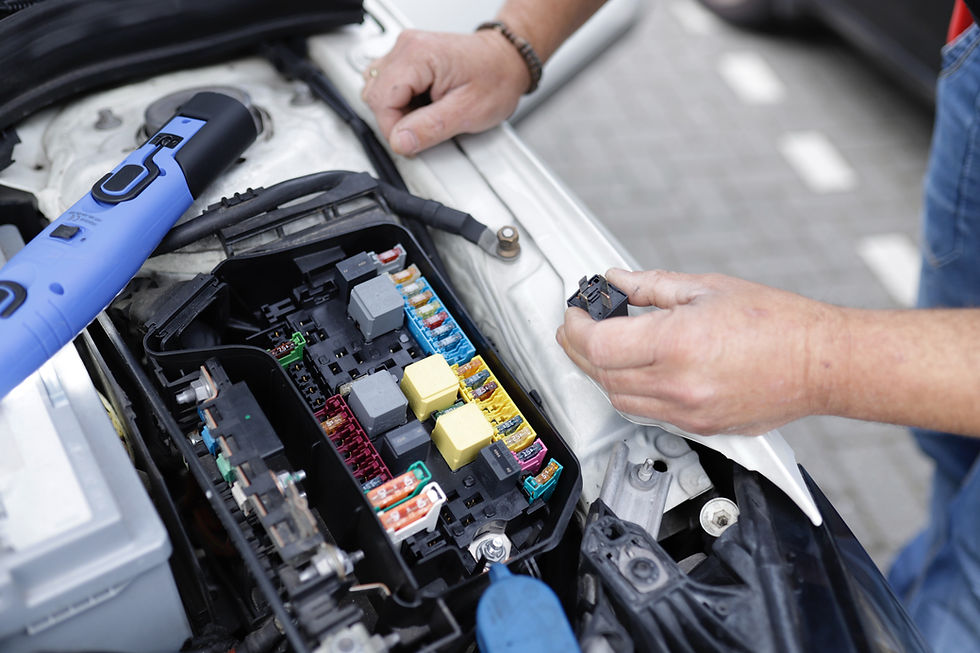EMI Testing – Radiated Susceptibility
- zacmcclain
- Feb 4, 2022
- 3 min read
It is interesting to see different people’s reactions to the topic of electromagnetic interference (EMI). Some people are uncomfortable and intimidated by it. Some people don’t especially like it but can muddle through. Some people are incredible at understanding everything to do with EMI. If you start talking to a non-electrical engineer about EMI, you’re almost certain to see their eyes glaze over followed by a quick change of the subject.

Photo by israel palacio on Unsplash
EMI testing can sometimes be a challenge. Without the right knowledge it can be difficult to know how to analyze the design to ensure it will pass the test requirements. And when problems come up in test, figuring out where the issue is and how to resolve it takes know-how and experience. But when the component goes into the system, it is crucial that there are not EMI problems—either from to the component to the rest of the system, or from the rest of the system to the component. How can you ensure EMI will not be a problem for your product?
Here is an example of an EMI test issue that I was able to work through.
Radiated Susceptibility and DC-to-DC Converters
I was once performing a radiated susceptibility EMI test on a piece of hardware when a certain frequency caused the reset circuitry in the unit under test to continually trip. Needless to say, this was a failure; testing had uncovered a susceptibility in the design. How best to proceed? One key first step in figuring out EMI issues is thresholding the problem. The test levels were lowered until the specific level that caused the issue was identified.
Thresholding failures has a couple of benefits. First, it provides more information about the issue, which helps to narrow down what might be causing the issue and then ultimately can point to the solution for the problem. Second, to enable potential alternative approaches that might be pursued if the problem persists. Examples are to see if the requirement can be changed or lowered to a level that the unit can pass and that still works in the rest of the system, or to see if there is rationale for accepting a susceptibility in a specific design and specific application. Pursuing these kinds of alternatives isn’t always possible, but thresholding enables at least being able to consider them.

Photo by Frankie Lopez on Unsplash
After identifying the trip point by thresholding, the data gathered from the failure was taken and the design was analyzed to see which specific component was causing the reset. By looking at the signature of the failure and comparing it with data from early on in development, the problem was isolated to a specific dc-to-dc converter. Apparently, noise from the test was causing the overvoltage protection feature to activate and shut down the converter, which resulted in tripping the reset circuitry.
The next step was to figure out how the radiated noise was making its way to that component, and what could be done to prevent that from happening. The most likely path for the noise to get to the converter was identified as the main power inputs for the component. There was already EMI protection in the front-end circuitry, both transient voltage suppressors (TVSs) and EMI filters. But by taking the knowledge gained from thresholding the issue, the determination was made that one of the TVSs had too high of a breakdown voltage and changing it to have a lower breakdown voltage should mitigate the issue. After running the analysis to ensure that the new TVS can still handle all of the required tests, the unit under test was quickly updated to have the new TVS installed. When the test was repeated, the unit passed to the full levels specified in the test requirement.
The final step in implementing a good corrective action is to see what other places might also be susceptible to the issue that has been uncovered. Sure enough, there were other applications that used a similar dc-to-dc converter and TVS combination. These designs were assessed and updated as needed ahead of their EMI tests to mitigate the issue and avoid additional churn on a known problem.
Conclusion
While EMI testing can seem intimidating sometimes, having the right knowledge and experience can make the process much less scarry. McClain Electronics Engineering (MEE) has an abundance of experience with all sorts of EMI tests, from MIL-STD-461, to DO-160, to other industry standards, to special application specific EMI tests. We can help establish test requirements, determine the proper test setups, assess designs to uncover potential problems, or work through testing and test issues. With MEE EMI testing doesn’t have to be intimidating.
Let us know if we can help with any of your EMI needs.
Zach McClain
McClain Electronics Engineering






Comments